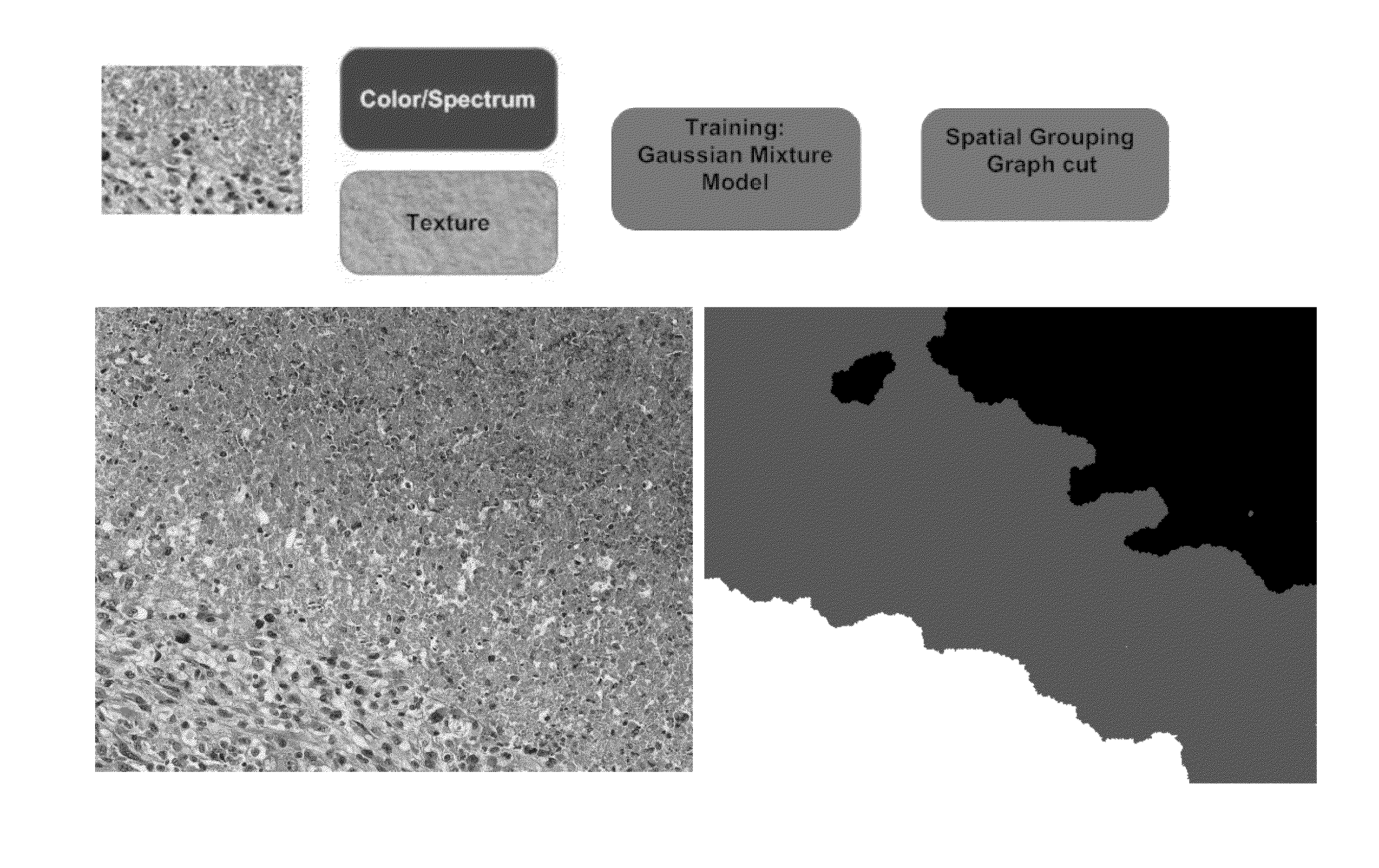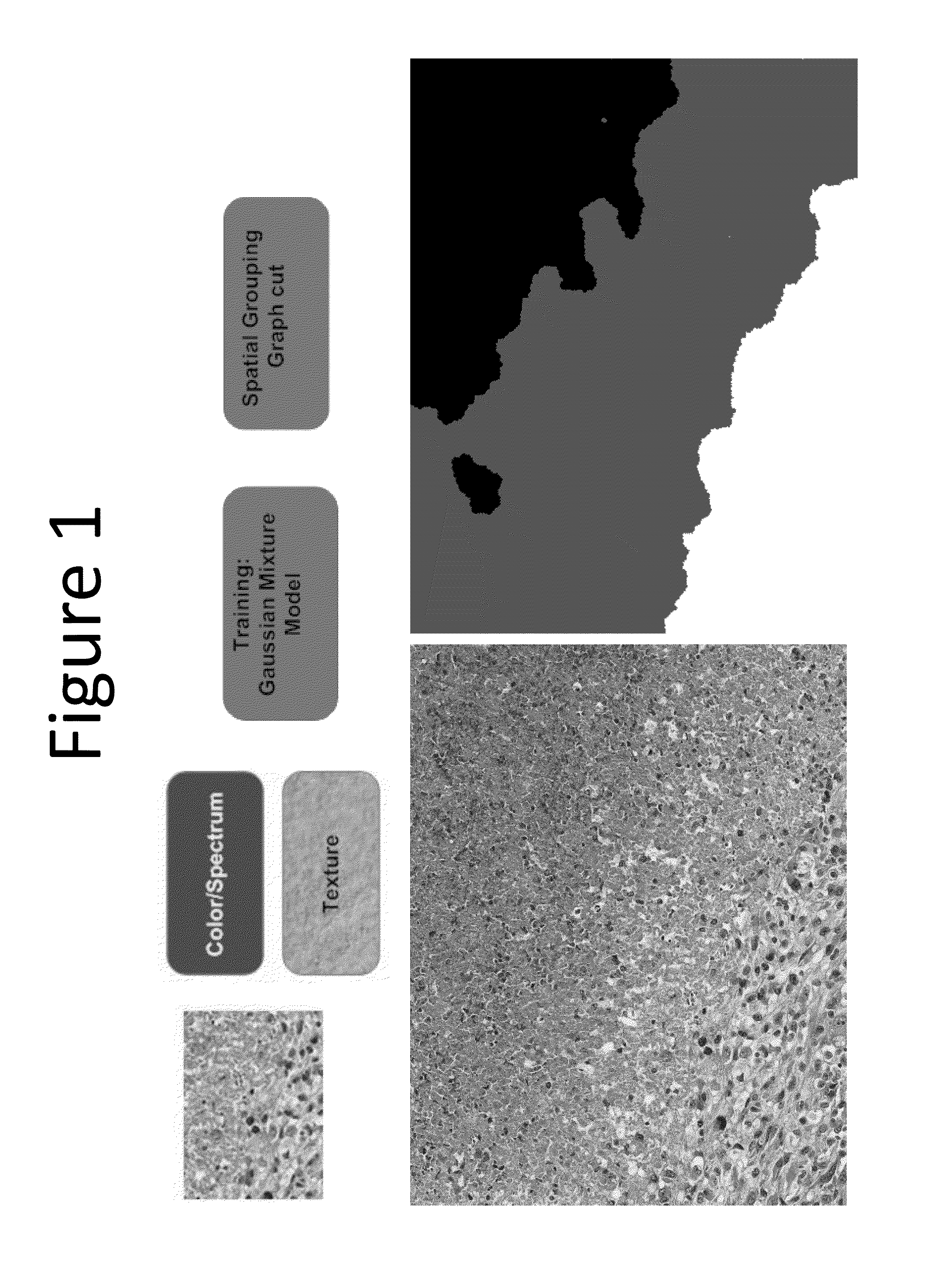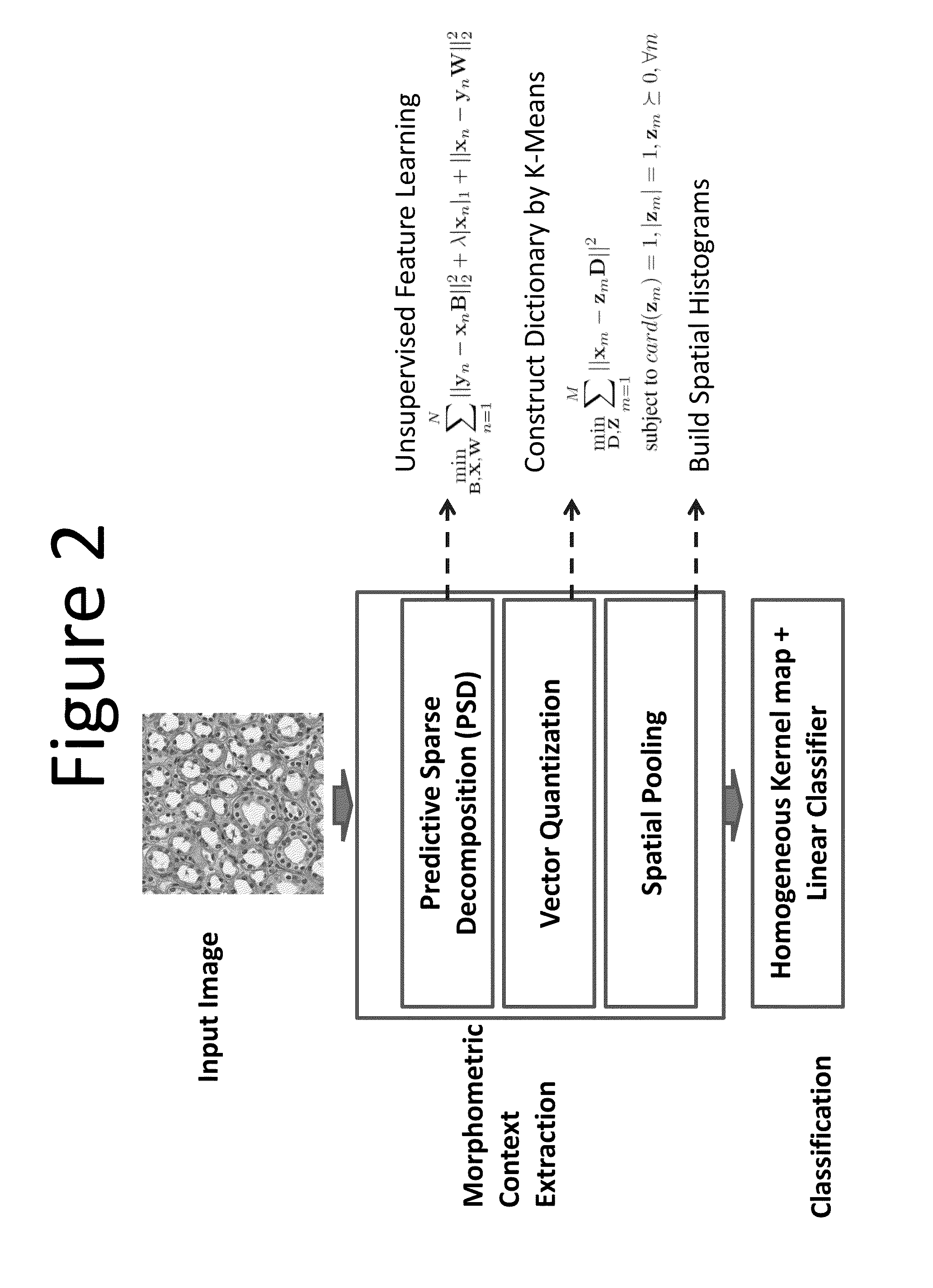Methods for delineating cellular regions and classifying regions of histopathology and microanatomy
a technology applied in the field of methods for delineating cellular regions and classifying regions of histopathology and microanatomy, can solve the problems of inapplicability of present techniques to a large cohort of histology sections, inability to perform existing techniques, and inability to meet the needs of patients
- Summary
- Abstract
- Description
- Claims
- Application Information
AI Technical Summary
Benefits of technology
Problems solved by technology
Method used
Image
Examples
example 1
Characterization of Tissue Histopathology via Predictive Sparse Decomposition and Spatial Pyramid Matching
[0038]Disclosed in this example is a tissue classification system and method based on predictive sparse decomposition (PSD) (Kavukcuoglu et al, 2008) and spatial pyramid matching (SPM) (Lazebnik et al, 2006), which utilize sparse tissue morphometric signatures at various locations and scales. Because of the robustness of unsupervised feature learning and the effectiveness of the SPM framework, this method achieved excellent performance even with small number of training samples across independent datasets of tumors. As a result, the composition of tissue histopathology in a whole slide image (WSI) was able to be characterized. In addition, mix grading could also be quantified in terms of tumor composition. Computed compositional indices, from WSI, could then be utilized for outcome based analysis, such as prediction of patient survival statistics or likely responses to therapeut...
example 2
Classification of Tumor Histology Via Morphometric Context
[0073]In this example (Reference: H Chang, A D Borowski, P T Spellman, and B Parvin, “Classification of tumor histopathology via morphometric context,” CVPR 2013), we proposed two variations of tissue classification methods based on representations of morphometric context (one variation is shown in FIG. 2), which were constructed from nuclear morphometric statistics of various locations and scales based on spatial pyramid matching (SPM) (Lazebnik et al, 2006). Due to the effectiveness of our representations, our methods achieved high performance even with a small number of training samples across different segmentation strategies and independent datasets of tumors. The performance was further complemented by the fact that one of the methods had a superior result with linear classifiers. These characteristics dramatically improved the (i) effectiveness of our techniques when applied to a large cohort, and (ii) extensibility to...
example 3
Classification of Histology Sections via Multispectral Convolutional Sparse Coding
[0123]This example (uses a multispectral unsupervised feature learning model (MCSCSPM) for tissue classification, based on convolutional sparse coding (CSC) (Kavukcuoglu et al, 2010) and spatial pyramid matching (SPM) (Lazebnik et al, 2006). The multispectral features are learned in an unsupervised manner through CSC, followed by the summarization through SPM at various scales and locations. Eventually, the image-level tissue representation is fed into linear SVM for efficient classification (Fan et al, 2008). Compared with sparse coding, CSC possesses two merits: 1) invariance to translation; and 2) producing more complex filters, which contribute to more succinct feature representations. Meanwhile, the proposed approach also benefits from: 1) the biomedical intuitions that different color spectrums typically characterize distinct structures; and 2) the utilization of context, provided by SPM, which i...
PUM
 Login to View More
Login to View More Abstract
Description
Claims
Application Information
 Login to View More
Login to View More - R&D
- Intellectual Property
- Life Sciences
- Materials
- Tech Scout
- Unparalleled Data Quality
- Higher Quality Content
- 60% Fewer Hallucinations
Browse by: Latest US Patents, China's latest patents, Technical Efficacy Thesaurus, Application Domain, Technology Topic, Popular Technical Reports.
© 2025 PatSnap. All rights reserved.Legal|Privacy policy|Modern Slavery Act Transparency Statement|Sitemap|About US| Contact US: help@patsnap.com



